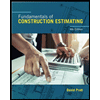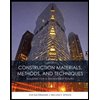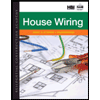For the section shown, use Whitney's rectangular block to calculate a, ß1 and c, determine the values of &t and 9, and ■ calculate the flexural design strength oMn Use normal weight concrete with f'c = 4000 psi and Ec = 3600 ksi, and Grade 60 steel (fy = 60,000 psi, Es=29,000 ksi). 25 in. 30 in. 6 #9 -16 in.- 2 in. 2in.
For the section shown, use Whitney's rectangular block to calculate a, ß1 and c, determine the values of &t and 9, and ■ calculate the flexural design strength oMn Use normal weight concrete with f'c = 4000 psi and Ec = 3600 ksi, and Grade 60 steel (fy = 60,000 psi, Es=29,000 ksi). 25 in. 30 in. 6 #9 -16 in.- 2 in. 2in.
Engineering Fundamentals: An Introduction to Engineering (MindTap Course List)
5th Edition
ISBN:9781305084766
Author:Saeed Moaveni
Publisher:Saeed Moaveni
Chapter12: Electric Current And Related Variables In Engineering
Section12.2: Electrical Circuits And Components
Problem 6BYG
Related questions
Question
Please show all steps

Transcribed Image Text:### Structural Engineering Problem: Calculating Flexural Design Strength
#### Objective:
For the section shown, use Whitney’s rectangular block to:
- Calculate \( a \), \( \beta_1 \), and \( c \),
- Determine the values of \( \epsilon_t \) and \( \phi \),
- Calculate the flexural design strength \( \phi M_n \).
#### Given Parameters:
- Use normal weight concrete with \( f'_c = 4000 \text{ psi} \) and \( E_c = 3600 \text{ ksi} \),
- Grade 60 steel (\( f_y = 60,000 \text{ psi} \), \( E_s = 29,000 \text{ ksi} \)).
#### Diagram Description:
A rectangular cross-section is illustrated as follows:
- The width of the section is 16 inches.
- The overall height of the section is 30 inches.
- There are 6 reinforcement bars depicted as circles, each labeled as #9.
- The depth of concrete cover from the top and the bottom of the section to the reinforcement is \( 2 \frac{1}{2} \) inches.
- The depth to the centroid of the reinforcement steel bars is specified as 25 inches from the top.
#### Detailed Steps for Calculation:
1. **Determine the depth parameters \( a \), \( \beta_1 \), and \( c \):
- Use the given concrete and steel properties and refer to the respective codes or standards to determine these values.
2. **Calculate \( \epsilon_t \) and \( \phi \):
- Utilize strain compatibility and force equilibrium methods to determine the tensile strain \( \epsilon_t \).
- Use appropriate design codes to find the strength reduction factor \( \phi \).
3. **Compute the flexural design strength \( \phi M_n \):
- Apply the calculated values into the design equations to find the nominal moment capacity and multiply by \( \phi \) to obtain the flexural design strength.
#### References:
- Structural engineering design codes (e.g., ACI 318).
This problem helps in understanding how to apply fundamental principles of reinforced concrete design, particularly in calculating the flexural strength of a concrete section with reinforcement. The figures provided alongside the mathematical approach help visualize and solve the problem effectively.
Expert Solution
This question has been solved!
Explore an expertly crafted, step-by-step solution for a thorough understanding of key concepts.
This is a popular solution!
Trending now
This is a popular solution!
Step by step
Solved in 2 steps

Follow-up Questions
Read through expert solutions to related follow-up questions below.
Follow-up Question
can you explain why in solving for d the 2.5in was divided by 2
Solution
Knowledge Booster
Learn more about
Need a deep-dive on the concept behind this application? Look no further. Learn more about this topic, civil-engineering and related others by exploring similar questions and additional content below.Recommended textbooks for you

Engineering Fundamentals: An Introduction to Engi…
Civil Engineering
ISBN:
9781305084766
Author:
Saeed Moaveni
Publisher:
Cengage Learning

Architectural Drafting and Design (MindTap Course…
Civil Engineering
ISBN:
9781285165738
Author:
Alan Jefferis, David A. Madsen, David P. Madsen
Publisher:
Cengage Learning

Fundamentals Of Construction Estimating
Civil Engineering
ISBN:
9781337399395
Author:
Pratt, David J.
Publisher:
Cengage,

Engineering Fundamentals: An Introduction to Engi…
Civil Engineering
ISBN:
9781305084766
Author:
Saeed Moaveni
Publisher:
Cengage Learning

Architectural Drafting and Design (MindTap Course…
Civil Engineering
ISBN:
9781285165738
Author:
Alan Jefferis, David A. Madsen, David P. Madsen
Publisher:
Cengage Learning

Fundamentals Of Construction Estimating
Civil Engineering
ISBN:
9781337399395
Author:
Pratt, David J.
Publisher:
Cengage,

Solid Waste Engineering
Civil Engineering
ISBN:
9781305635203
Author:
Worrell, William A.
Publisher:
Cengage Learning,

Construction Materials, Methods and Techniques (M…
Civil Engineering
ISBN:
9781305086272
Author:
William P. Spence, Eva Kultermann
Publisher:
Cengage Learning

Residential Construction Academy: House Wiring (M…
Civil Engineering
ISBN:
9781285852225
Author:
Gregory W Fletcher
Publisher:
Cengage Learning